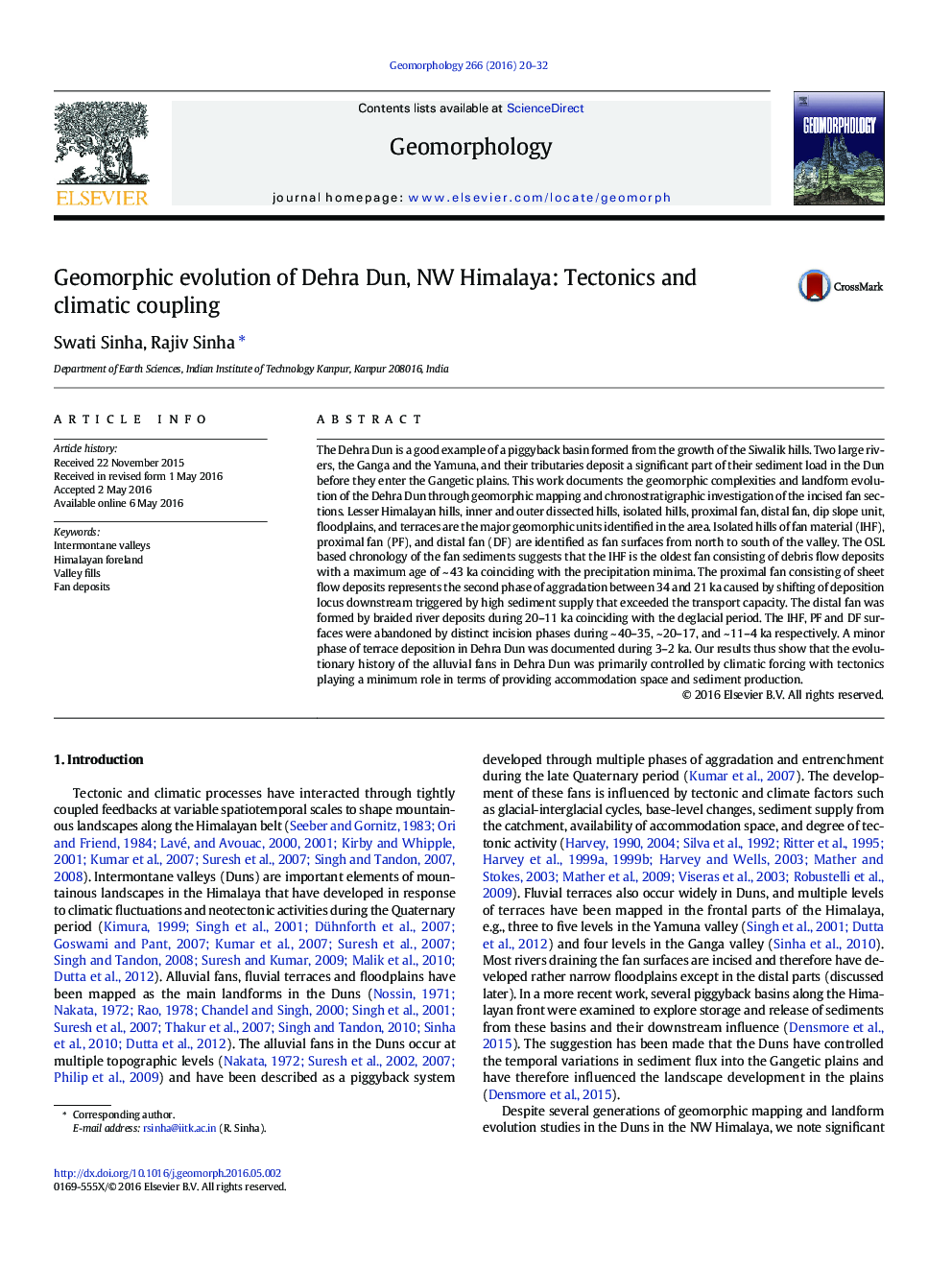| کد مقاله | کد نشریه | سال انتشار | مقاله انگلیسی | نسخه تمام متن |
|---|---|---|---|---|
| 4684013 | 1635383 | 2016 | 13 صفحه PDF | دانلود رایگان |

• Geomorphic complexities and landform evolution in an intermontane basin in NW Himalaya
• Multiple phases of fan aggradation related to climate forcings
• Tectonics provided the accommodation space for valley aggradation and sediment supply.
• Regional correlation of intermontane basin fills along the Himalayan front.
The Dehra Dun is a good example of a piggyback basin formed from the growth of the Siwalik hills. Two large rivers, the Ganga and the Yamuna, and their tributaries deposit a significant part of their sediment load in the Dun before they enter the Gangetic plains. This work documents the geomorphic complexities and landform evolution of the Dehra Dun through geomorphic mapping and chronostratigraphic investigation of the incised fan sections. Lesser Himalayan hills, inner and outer dissected hills, isolated hills, proximal fan, distal fan, dip slope unit, floodplains, and terraces are the major geomorphic units identified in the area. Isolated hills of fan material (IHF), proximal fan (PF), and distal fan (DF) are identified as fan surfaces from north to south of the valley. The OSL based chronology of the fan sediments suggests that the IHF is the oldest fan consisting of debris flow deposits with a maximum age of ~ 43 ka coinciding with the precipitation minima. The proximal fan consisting of sheet flow deposits represents the second phase of aggradation between 34 and 21 ka caused by shifting of deposition locus downstream triggered by high sediment supply that exceeded the transport capacity. The distal fan was formed by braided river deposits during 20–11 ka coinciding with the deglacial period. The IHF, PF and DF surfaces were abandoned by distinct incision phases during ~ 40–35, ~ 20–17, and ~ 11–4 ka respectively. A minor phase of terrace deposition in Dehra Dun was documented during 3–2 ka. Our results thus show that the evolutionary history of the alluvial fans in Dehra Dun was primarily controlled by climatic forcing with tectonics playing a minimum role in terms of providing accommodation space and sediment production.
Journal: Geomorphology - Volume 266, 1 August 2016, Pages 20–32